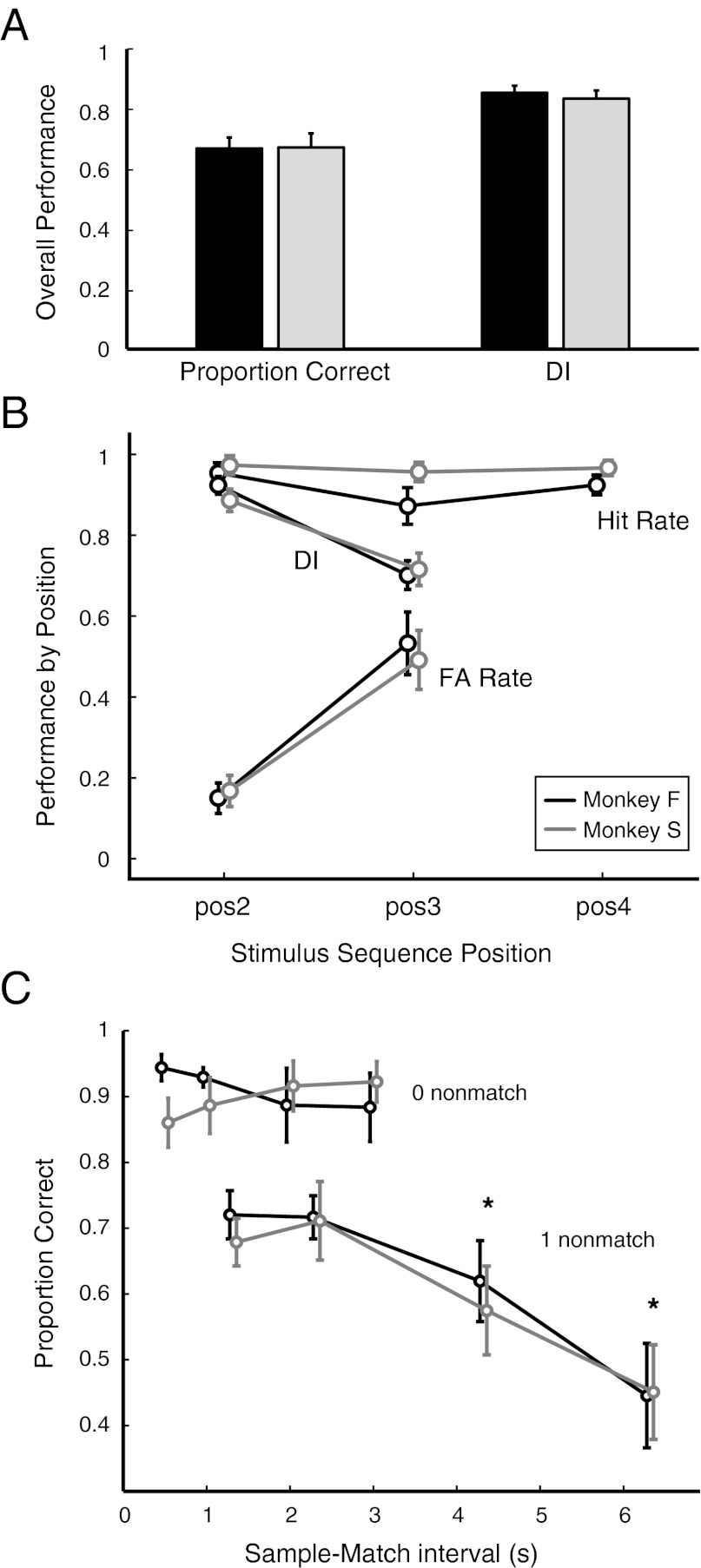Fig. 2.
(A) Overall performance (mean +SD) as measured by proportion of correct trials (Left) and DI (Right) for all standard testing sessions (black bars, monkey F, n = 360 sessions, >250,000 trials; gray bars, monkey S, n = 116 sessions, >82,000 trials). (B) Hit rate, FA rate, and DIs computed separately at each position within the trial sequence for monkey F (black) and monkey S (gray). FA rate and DI are not computed for the fourth stimulus, because it is always a match, and so no FA can occur (details in SI Methods, Analysis of Behavioral Performance and Fig. S3). (C) Control task 1 with variable ISIs between sample offset and match onset. Performance is plotted as a function of the total sample-match interval (e.g., a one-nonmatch trial at an ISI of 0.5 s would include two 0.5-s delay intervals plus the 0.3-s duration of the intervening nonmatch stimulus, for a total of 1.3 s) and is shown separately for trials with (i) no nonmatch stimulus (upper curves) and (ii) one intervening nonmatch stimulus (lower curves). In the absence of a nonmatch stimulus, DMS performance in both animals is stable up to 3 s. With a single intervening nonmatch stimulus, scores at 1- and 2-s intervals are significantly below those without an intervening nonmatch, and there is a strong effect of delays ≥4 s. Asterisks mark scores that are significantly different from the scores at 1 and 2 s (which are equivalent) according to ANOVA followed by multiple comparisons. Performance between trial types was compared by proportion correct, because DI is not applicable to trials with no nonmatch stimuli (and thus no possible FA response). In this control task, the ISI (0.5, 1, 2, or 3 s) was fixed within daily sessions and randomly interleaved across 40 sessions, 10 at each ISI. Median number of trials per ISI was 919 for monkey F (black) and 727 for monkey S (gray). Each point on the curves for one intervening nonmatch is offset from a whole-number delay by 0.3 s to account for the added delay due to the presentation of that 0.3-s nonmatch stimulus.

